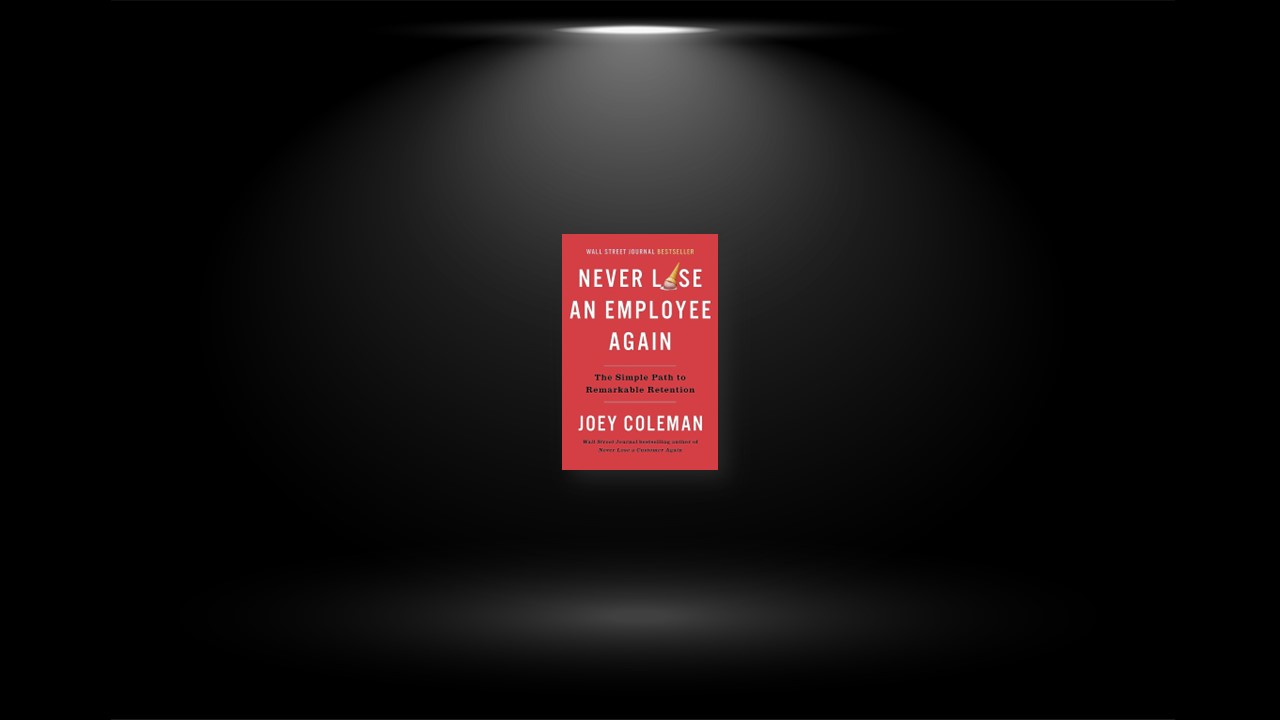YOU ONLY HAVE 100 DAYS TO GET THE EXPERIENCE RIGHT
While most employers understand the touchpoints and interactions they have with employees are important, not all organizations realize the significance of the timing of those experiences. If you want an employee to stay with your organization long-term, the foundational interactions at the beginning of the relationship are key, and those positive interactions must be sustained over many years.
A new employee’s feelings for your brand start to accumulate when they first see your job posting and continue throughout their time as an employee. These sentiments are accelerated and magnified when the employee shows up for their first day on the job, receives their first performance review, gets promoted, and/or experiences their first work-related setback. From the beginning of the relationship, a clock starts ticking and every interaction, touchpoint, exchange, and communication contributes to the employee’s overall perception of your organization. Each interaction matters, and as they accumulate, their importance increases. You can’t plan on making a good impression once the employee proves to be a contributor or a quality hire. You’ll never reach that stage in the relationship if the early interactions aren’t positive enough to keep the employee coming back each day.
THE JOURNEY OF 100 DAYS CONSISTS OF EIGHT PHASES
The eight phases track the employee journey from the time someone first considers working with the organization to the time when the employee refers potential new hires and sees the employer as an indispensable part of their life. Every employee has the potential to travel through all eight phases, but not all employees will. Some employees will leave mid-journey. Others will stall out along the way.
PHASE 1: ASSESS
In the Assess phase, a prospective employee is researching your company and considering whether or not to work for/with you. Depending on your hiring procedures, this could include attending a job fair and speaking to your representative, talking to a third-party recruiter about your business, reviewing listings on a job postings website, or checking out open positions on your company website. This phase also includes the actual application and/or résumé submission process, as well as any associated pre-screenings and interviews.
PHASE 2: ACCEPT
The Accept phase consists of two significant decisions. First, the employer decides to extend a job offer to a selected candidate from the Assess phase. Second, the prospective employee accepts the job offer—signaling their desire to join the organization. This phase includes both the formal overture (usually an offer letter) and the acceptance of that offer. Organizations often focus solely on the act of acceptance, while failing to see the responsibility (and opportunity) that comes with making an offer.
PHASE 3: AFFIRM
After experiencing the emotional high of receiving and committing to a job offer in the Accept phase, new employees move into the Affirm phase—the time between acceptance and the employee’s start date—when their emotional state often takes a dramatic downturn. The consumer purchase experience of “buyer’s remorse” shows up in the employment context as “hire’s remorse.” A newly minted employee often feels fear, doubt, and uncertainty about the decision they just made, and the organization must take steps to assuage those feelings.
PHASE 4: ACTIVATE
The Activate phase is the new hire’s first day on the job. The employee officially joins the team. In most organizations, Activate phase activities are anything but remarkable. The natural first-day jitters and anxiety experienced by most new employees are met with stacks of paperwork, uninspired yet required trainings and briefings, and a flurry of coworker introductions. This leaves most new hires overwhelmed as they struggle to remember names and roles, let alone understand their place within the enterprise. While the typical employee usually arrives at work with a sense of excitement and possibility, these feelings can quickly turn negative because of interactions (planned and unplanned) with other employees.
The Activate phase presents the chance to start things off in the right way and set the standard for future interactions. If the first day doesn’t go well, it will be difficult to recover. If things do start strongly, you can build momentum in the coming weeks and months as you work to establish a robust employer-employee relationship. A thoughtful and sincere welcome activates the new relationship in a memorable fashion. You must activate your new employee relationship with energy and enthusiasm.
PHASE 5: ACCLIMATE
In the Acclimate phase, a new hire learns how the organization works. An employee needs to be familiar with the various departments, the types of interactions, and the host of tools that are used in day-to-day operations. In addition, they need to understand their role(s) and responsibilities, as well as how to work with other employees—particularly because connections with coworkers and colleagues heavily influence employee experience.
The Acclimate phase occurs in the period between the second day on the job and the time when the employee starts to achieve milestones and goals. This phase can last for weeks or, more often, months. Whether an employee has a goal of feeling comfortable in their role, seeing the impact of their work, feeling supported by/connected to their peers, or receiving a promotion to the next level of their career, the employee must feel a sense of marked progress before they can move on to the next phase in the employee journey. The Acclimate phase offers you the opportunity to introduce employees to the organization’s culture, processes, and operational philosophies in a way that helps them adapt to this new environment. You must acclimate your new employees to your way of doing business if you want to retain them in the future.
PHASE 6: ACCOMPLISH
The Accomplish phase of the employee experience occurs when the new employee achieves the result(s) they were looking for when they first decided to work with you. For a salesperson, this might be making their first sale. For a project manager, it might be completing their first official project. For a call center agent, it might be feeling confident fielding call after call for an entire shift—and knowing how to help the customer every time.
During this phase, the employee’s initial expectation for the end result(s) may or may not be achieved—especially if their goal was substantial. If they don’t achieve their goal, they continue to remain in the Acclimate phase—progressing toward the desired milestone. If they stay in this phase too long without feeling a sense of accomplishment, the employee will usually quit.
The Accomplish phase offers you the opportunity to acknowledge the significance of an employee reaching their desired results and celebrate this milestone achievement. To earn long-term retention, you must ensure that your employees accomplish their goals.
PHASE 7: ADOPT
In the Adopt phase, the employee’s loyalty to the organization reaches a new high. They fully embrace your philosophy, culture, and operation. They act and make decisions based on the best interest of the organization, and they proudly contribute to the culture.
Having accomplished their original goal, the employee doubles down on the association and establishes a long-term relationship with the organization. They commit to the relationship—even when tempted with competing job offers or opportunities. Only after an employee has experienced feelings of accomplishment and taken personal ownership of the relationship can they be considered truly loyal.
The Adopt phase offers the opportunity to formalize a long-term relationship that goes deeper than an “it’s just my job” attitude. An employee who adopts you sees the organization as an important and sometimes indispensable partner in their future career, keeping them engaged for many years to come.
PHASE 8: ADVOCATE
In the Advocate phase, the employee becomes a raving fan and zealous promoter. Their trust in the organization is well established and they view their professional network as an extension of their personal network. Employees promote the brand publicly in both marked expressions (e.g., a social media post about how much they love their job) and unmarked expressions (e.g., a friendly conversation about their job with a neighbor).
Failure to appreciate this advocacy will not only decrease its frequency but it may push an advocate back to the Adopt phase, sapping their energy and enthusiasm for the organization in the process. Not every adopter will turn into an advocate—and that’s okay. What must be avoided is the advocate not feeling recognized or rewarded for their promotion of the organization.
The Advocate phase offers the opportunity to publicly acknowledge raving-fan employees and further strengthen the relational bond. Showing appreciation for these outgoing advocates by delivering a remarkable experience to their referrals and involving these zealous team members in long-term strategy conversations deepens their advocacy.


